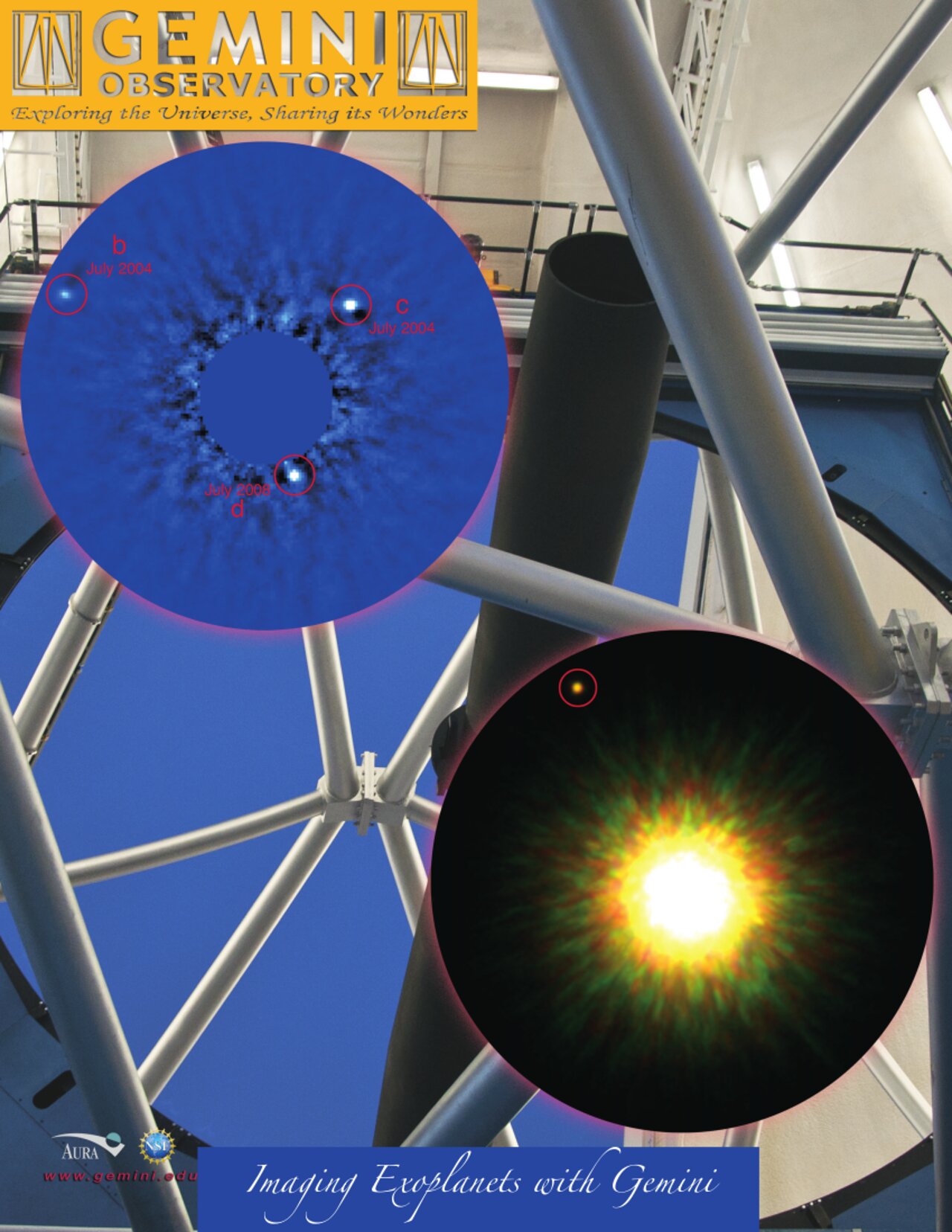Handouts: Imaging Exoplanets with Gemini
Planetary First Family (left) Astronomers using the Gemini North telescope and W.M. Keck Observatory on Hawaii’s Mauna Kea have obtained the first-ever direct images identifying a multi-planet system around a normal star. The planets (indicated by b, c and d) formed about sixty million years ago and are young enough that they are still glowing from heat released as they contracted. Analysis of the brightness and colors of the objects shows that the objects range from about 7 to 10 times the mass of Jupiter. As in our solar system, these giant planets orbit in the outer regions of this system – at roughly 25, 40, and 70 times the Earth-Sun separation. The furthest planet orbits just inside a disk of dusty debris, similar to that produced by objects in the Kuiper Belt of our solar system (just beyond the orbit of Neptune at 30 times the Earth-Sun distance). In some ways, this planetary system seems to be a scaled-up version of our solar system with a larger and brighter star.
See press release at: www.gemini.edu/threeplanetspr
First Picture of Likely Planet around Sun-like Star (right) First reported in September 2008 by a team led by David Lafrenière (then at the University of Toronto, now at the University of Montreal and Center for Research in Astrophysics of Quebec), the suspected planetary system (shown at right) required further observations over time to confirm that the planet and star were indeed moving through space together. “Back in 2008 what we knew for sure was that there was this young planetary mass object sitting right next to a young Sun-like star on the sky,” says Lafrenière. The extremely close proximity of the two objects strongly suggested that they were associated with each other but it was still possible (but unlikely) that they were unrelated and only aligned by chance in the sky. According to Lafrenière, “Our new observations rule out this chance alignment possibility, and thus confirms that the planet and the star are related to each other.” The host star is located about 500 light-years away in a group of young stars called the Upper Scorpius association that formed about five million years ago. The observations used the Near-Infrared Imager (NIRI) and the Altair adaptive optics system on the Gemini North telescope. Adaptive optics allows scientists to remove much of the distortions caused by our atmosphere and dramatically sharpen views of space.
See press release at: www.gemini.edu/sunstarplanet
Créditos:NOIRLab
About the Handout
| Id: | handout053 |
| Release date: | 13 de Julio de 2021 a las 11:28 |
| Idioma: | English |
